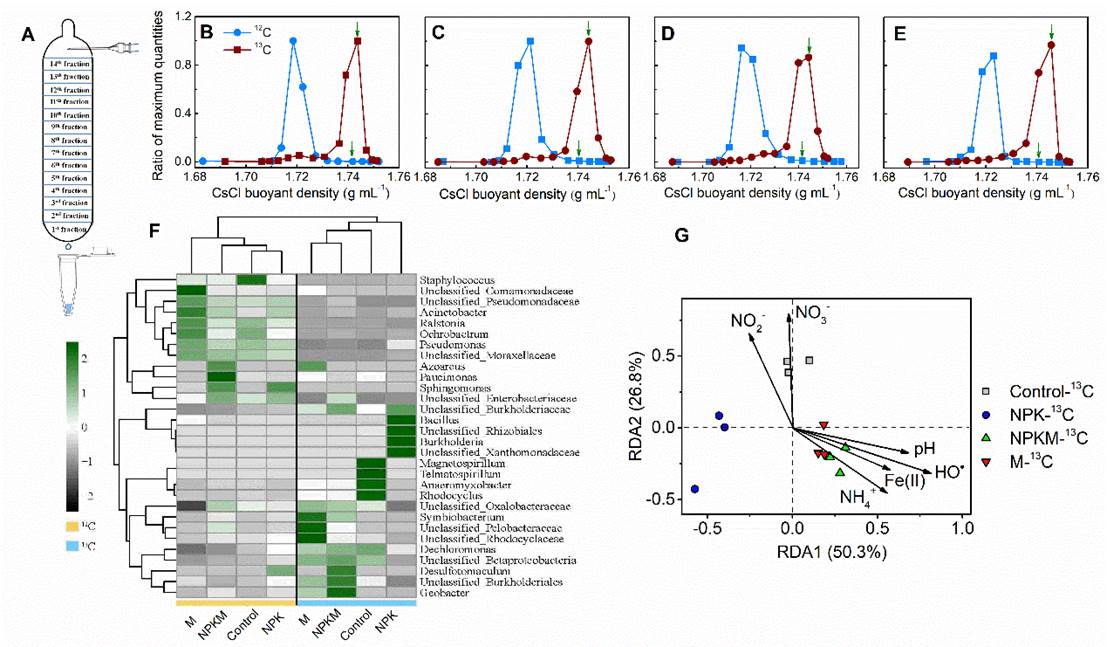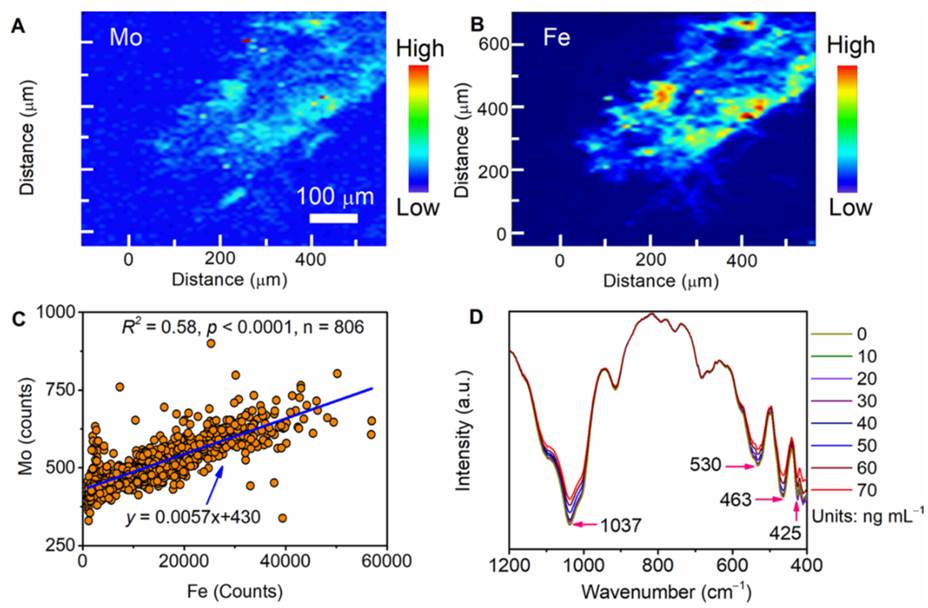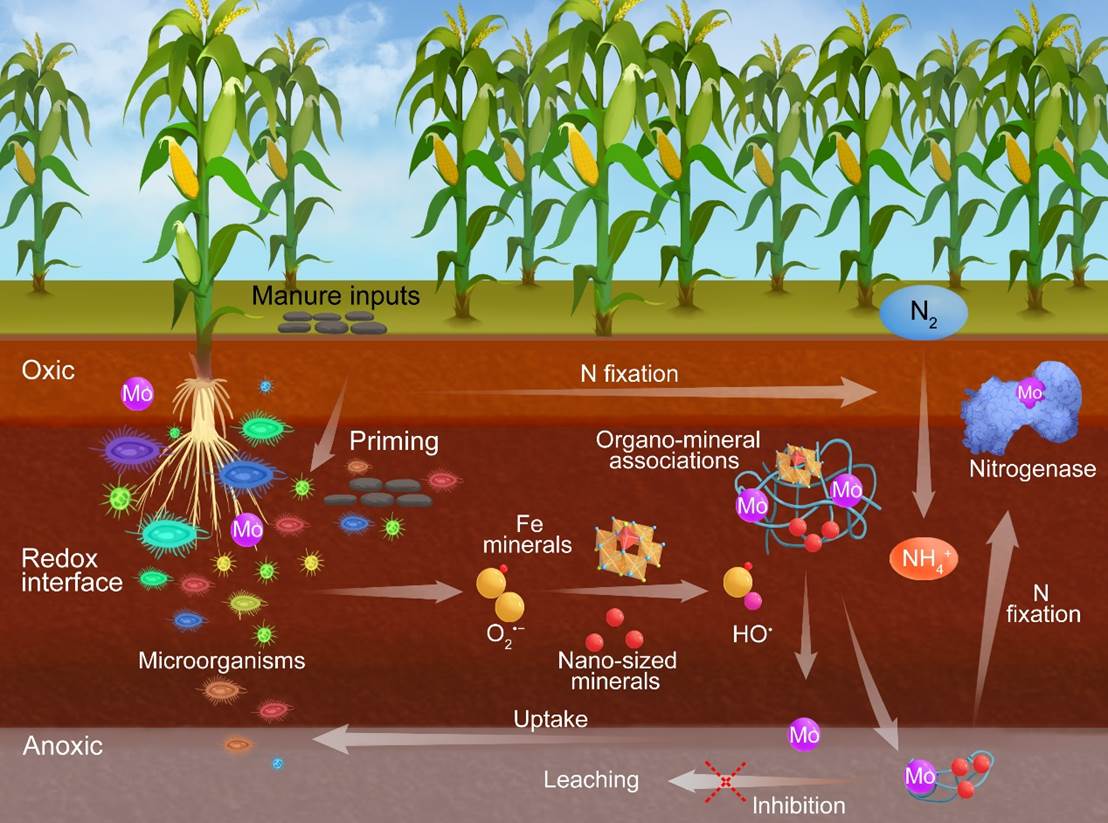Globally, biological N fixation by symbiotic bacteria in higher plants and free-living (asymbiotic) bacteria in soils has been estimated to vary between 44 and 100−300 teragrams (Tg, 1 Tg = 1012 g) N yr−1. Biological N fixation is composed of symbiotic and asymbiotic N fixations. Although asymbiotic bacteria have a lower N fixation rate than symbiotic bacteria, the asymbiotic bacteria have a wide distribution globally, are independent on legumes, and fix considerable N amounts in some ecosystems (e.g., deserts and tropical forests). Asymbiotic N fixation is approximately 10−15 kg N ha−1 yr−1 and accounts for up to half of all terrestrial N fixation. Biological N fixation is controlled by the availability of molybdenum (Mo), which is a cofactor of the most common isoform of the N fixing enzyme nitrogenase (Mo-nitrogenase). However, Mo is a limiting nutrient in most terrestrial ecosystems, ranging from tropical and temperate forests to the Arctic. Therefore, elucidating the mechanisms and factors that affect Mo bioavailability is crucial for understanding N fixation.
In this research, Prof. Yu et al. have demonstrated that long-term (26 years) manure fertilization increased microbial diversity and content of short-range ordered iron (oxyhydr)oxides that raised Mo bioavailability (by 2.8 times) and storage (by ∼30%) and increased the abundance of nifH genes (by ∼14%) and nitrogenase activity (by ∼60%). Nanosized iron (oxyhydr)oxides (ferrihydrite, goethite, and hematite nanoparticles) play a dual role in soil Mo cycling: (i) in concert with microorganisms, they raise Mo bioavailability by catalyzing hydroxyl radical (HO•) production via the Fenton reactions and (ii) they increase Mo retention by association with the nanosized iron (oxyhydr)oxides. Using stable isotope probe (SIP) combined with Sequenced 16S rRNA gene amplicons for genomic DNA, the species Symbiobacterium, Geobacter, Rhodocyclaceae, and Azospirillum, were identified to responsible for the production of hydroxyl radicals and Fe(II). In summary, long-term manure fertilization raised the stock and bioavailability of Mo (and probably also of other micronutrients) by increasing iron (oxyhydr)oxide reactivity and intensified asymbiotic N fixation through an increased abundance of nifH genes and nitrogenase activity. This work provides a strategy for increasing biological N fixation in agricultural ecosystems.
Given naturally occurring iron nanoparticles up to 105 Tg in soils and taxonomically and functionally diverse microorganisms being a vast source of superoxide and hydrogen peroxide, this work suggests that in addition to strong binding compounds (e.g., siderophores), reactive oxygen species (ROS) production may be another widespread microbial strategy to acquire Mo in terrestrial ecosystems. Furthermore, this current study provides a step towards understanding the asymbiotic N fixation in terrestrial ecosystems, the coevolution of the lithosphere and biosphere, and global nutrient cycling.
Recently, this work has been published by Environmental Science & Technology (2021, 55(21): 14979–14989). This work was supported by the National Natural Science Foundation of China (41977271) and the National Key Research and Development Program of China (2020YFC1806803). The authors thank B.R. Wang for his assistance in soil sampling in the Qiyang Long-term Fertilization Station, R.Z. Li, C.C. Huang, Y.Q. Li, and L. Yang for sample analysis, and also the staffs for help and support at beamlines BL15U and BL01B at Shanghai Synchrotron Radiation Facility.
Article information
Yu, Guang-Hui*; Kuzyakov, Yakov; Luo, Yu; Goodman, Bernard; Kappler, Andreas; Liu, Fei-Fei; Sun, Fu-Sheng*. Molybdenum bioavailability and asymbiotic nitrogen fixation in soil are raised by iron (oxyhydr)oxide mediated free radical production. Environmental Science & Technology, 2021, 55(21): 14979–14989.
Website: https://doi.org/10.1021/acs.est.1c04240

Figure 1. DNA-13C− stable isotope probe (SIP) microcosm experiments illustrating functional microbial communities responsible for Fe(III) (oxyhydr)oxide reduction and dissolution as well as hydroxyl radical (HO•) formation.

Figure 2. Mo retention by Fe (oxyhydr)oxides in long-term (26 years) pig manure-fertilized soil. (A) micro-X-ray fluorescence (μ-XRF) mapping of Mo. (B) μ-XRF mapping of Fe. (C) Mo vs Fe correlation plot from the (A,B) maps. (D) Response of functional groups in Fourier transform infrared (FTIR) spectra to exogenic Mo.

Figure 3. Mechanisms increasing Mo bioavailability and storage as well as asymbiotic N fixation by long-term manure inputs in soil.